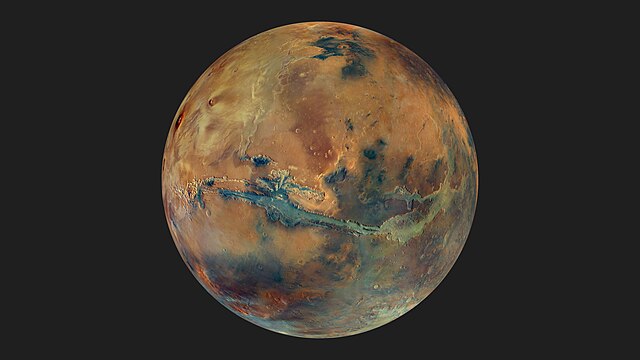
The European Space Agency (ESA) plans to air a groundbreaking event: a live broadcast from Mars! This extraordinary transmission will present fresh images from the Mars Express spacecraft at a rapid rate of one image every 50 seconds.
Roughly 187 million miles lie between our home planet and the Red Planet.
Consequently, it takes a staggering 18 minutes for an image captured on Mars to travel all the way back to Earth. While we can’t claim it to be an instant live stream, it represents the closest approximation that scientific knowledge permits.
Mars Express Mission
The Mars Express mission has been in operation for nearly two decades, and as time goes on, the equipment used for this endeavor is starting to show its age. With the passage of time, technological advancements have been made, and the current equipment used for the mission may not be as cutting-edge as it once was.
However, despite these challenges, the team behind the Mars Express mission is embarking on a remarkable new endeavor: attempting a live stream from the planet Mars itself.
This live stream initiative is an unprecedented undertaking. Never before has such an endeavor been attempted, making it a venture filled with anticipation and uncertainty. The team is eagerly hoping for the best possible outcome as they push the boundaries of scientific exploration.
ESA spacecraft observations and data collection
The European Space Agency (ESA) highlights an interesting aspect of spacecraft observations and data collection. Most of the time, these spacecrafts are not in direct communication with Earth. This can happen when they are positioned on the opposite side of a planet or when their antennas are not pointing toward Earth.
However, this situation does not pose a significant issue. The valuable data collected by these spacecraft is safely stored and transmitted at a later time when they are in an optimal position for communication with Earth. This ensures that the information gathered during these periods of limited contact is not lost.
Live Stream from Mars on the ESA YouTube channel pic.twitter.com/Cplk3f3Dup
— Uwe Hauck 📯 (@bicyclist) June 2, 2023
Regarding the VMC camera aboard the Mars Express spacecraft, scientists have devised a specific approach. They will periodically “downlink” and process the images captured by the camera every few days.
Once processed, these images will be released to the public on Flickr’s popular platform. This allows for a controlled and organized distribution of the fascinating visual content from the mission.
Live streams from space
Live streams directly from space are incredibly uncommon occurrences. However, there have been a few notable instances in the past.
One such event took place last year during NASA’s DART mission. In a bold and deliberate move, the space agency purposely directed a spacecraft to collide with an asteroid. This extraordinary mission was broadcasted live, providing a unique opportunity for viewers to witness this remarkable feat in real-time.
Among the most iconic live streams in history is the Apollo 11 mission. This historic event captivated the world as it delivered humanity’s inaugural footsteps on the surface of the Moon.
The live broadcast of this extraordinary achievement allowed people from around the globe to share in the awe-inspiring moment and become part of this significant milestone in human history.
See all the latest news from Greece and the world at Greekreporter.com. Contact our newsroom to report an update or send your story, photos and videos. Follow GR on Google News and subscribe here to our daily email!



